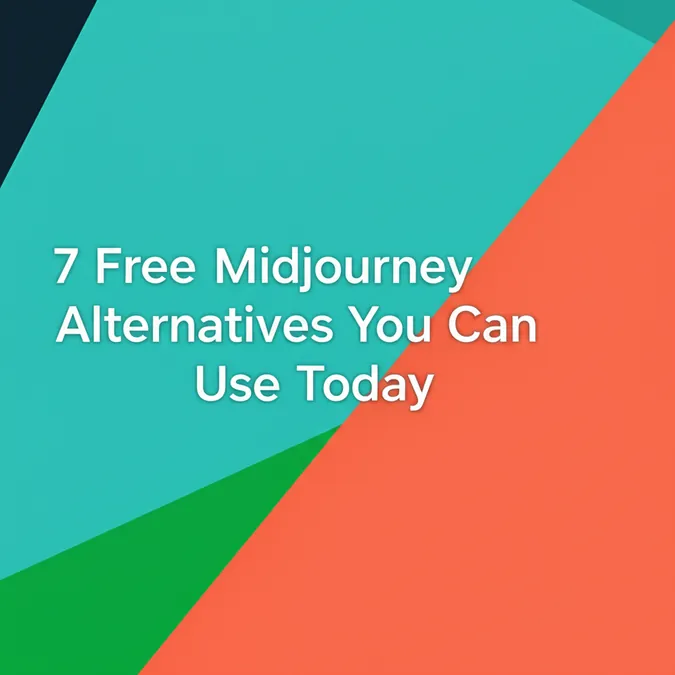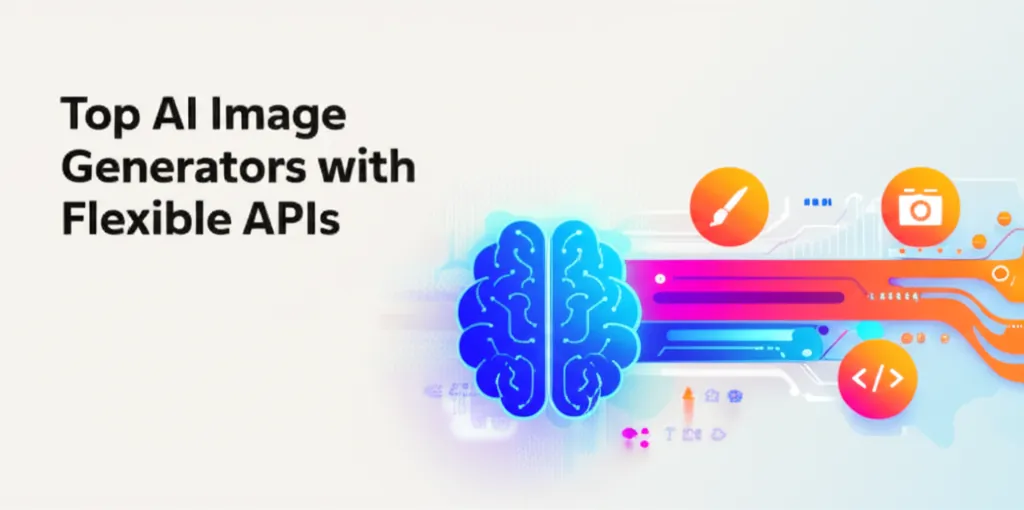Stable Diffusion vs. Midjourney: The Ultimate Comparison
Stable Diffusion vs. Midjourney: The Ultimate Comparison
This guide provides a definitive comparison between the artistic powerhouse Midjourney and the open-source toolkit Stable Diffusion, helping you choose the right AI image generator for your professional needs.
In the rapidly expanding universe of generative AI, two names consistently dominate the conversation around image creation: Midjourney and Stable Diffusion. Midjourney has captured the public imagination with its breathtakingly artistic and coherent outputs, establishing a high watermark for aesthetic quality. In the other corner stands Stable Diffusion, not as a single product, but as an open-source model that has empowered a global community of developers, researchers, and tinkerers to build, customize, and control the image generation process from the ground up.
For developers and designers, the choice between them isn't just about which one creates "prettier pictures." It's a fundamental decision about workflow, control, customization, and integration. The stable diffusion vs midjourney debate boils down to a core trade-off: do you need a highly polished, opinionated tool that delivers stunning results with minimal friction, or do you require an open, flexible framework that you can mold to your exact specifications?
This article provides a deep, technical comparison to help you make an informed decision. We'll dissect their core philosophies, compare key features, and explore practical considerations like API access, commercial licensing, and specific use cases like character design.
At a Glance: Key Differences Between Stable Diffusion and Midjourney
| Feature | Midjourney | Stable Diffusion |
|---|---|---|
| Core Philosophy | A curated, closed-source artistic tool focused on aesthetic quality and ease of use. | An open-source, foundational model focused on flexibility, control, and customization. |
| Accessibility & UI | Primarily accessed through a Discord bot. Simple prompt-based interface. | A model that requires a user interface (e.g., AUTOMATIC1111, ComfyUI) or an API. Can be run locally or via cloud services. |
| Customization | Limited to parameters like --style, --chaos, and image weighting. No model training. | Nearly infinite. Supports model fine-tuning, LoRAs, Textual Inversion, ControlNet, and more. |
| Control | High-level control over style and composition. Less granular control over specific elements. | Pixel-level control possible with tools like ControlNet, inpainting, and meticulous prompting. |
| Open Source | No. It is a proprietary, closed-source service. | Yes. The core models are open source, forming the foundation for a vast list of open source ai art generators for developers. |
| API Access | No official public API, creating a significant barrier for developers. | Yes. Numerous options exist, from the official Stability AI API to self-hosted endpoints. |
| Cost Model | Subscription-based (no free tier after the initial trial period). | The model itself is free. Costs are associated with compute (running it locally) or using a third-party generation service. |
| Commercial Use | Generally permitted on all paid plans. Users should always verify the latest Terms of Service. | Highly permissive, but depends on the specific model's license (e.g., CreativeML OpenRAIL-M) and the service used. |
The Core Philosophies: Artistry vs. Accessibility
Understanding the fundamental design philosophy of each tool is crucial to grasping why they behave so differently.
Midjourney: The Curated Artistic Experience
Midjourney is best understood as an "opinionated" artistic director. Its primary goal is to interpret a user's prompt and produce an aesthetically pleasing image with a distinct, recognizable style. The entire experience is streamlined through a Discord server, fostering a sense of community but also confining the workflow to a chat interface.
This curated approach is its greatest strength and its most significant limitation. For a designer needing a beautiful concept image quickly, Midjourney is unparalleled. It requires little technical knowledge to get started and consistently produces high-quality, coherent results. However, this ease of use comes at the cost of deep control and customizability.
Stable Diffusion: The Open-Source Powerhouse for Developers
Stable Diffusion is not a single, user-facing application; it is a foundational technology. As an open-source model, its code is freely available for anyone to use, modify, and build upon. This has led to an explosion of innovation, with a vibrant community creating countless custom models, tools, and user interfaces.
To use Stable Diffusion, you typically interact with it through a web interface like AUTOMATIC1111, which you can run on your own hardware, or through a cloud-based service. This approach offers developers and technical artists an unparalleled level of control. You can choose from thousands of community-trained models, fine-tune a model on your own dataset, and leverage powerful extensions to guide the generation process with surgical precision.
Feature Deep Dive: A Technical Comparison
While both tools generate images from text, their capabilities diverge significantly when it comes to professional workflows.
Control and Customization: Fine-Tuning Your Creations
Midjourney offers a set of parameters to influence its output. You can use --chaos to vary the results, --stylize to adjust the strength of its artistic style, and blend images to combine concepts. These are powerful high-level controls.
Stable Diffusion, however, operates on a much more granular level. Its ecosystem is built around customization:
- Custom Models: Users can train or download models specialized for specific styles (e.g., anime, photorealism, architectural rendering).
- LoRA (Low-Rank Adaptation): These are small files that "inject" a specific style, character, or object into a generation without needing to retrain the entire model.
- ControlNet: A revolutionary extension that allows you to guide the image composition using an input image, such as a human pose, a depth map, or a simple sketch. This gives artists deterministic control over the output's structure.
Character Consistency: A Critical Look at Midjourney vs. Stable Diffusion for Character Design
A major challenge in AI art is creating the same character across multiple images. This is a key battleground in the midjourney vs stable diffusion for character design debate.
Midjourney recently introduced a "Character Reference" (--cref) feature, which allows users to reference an existing image to maintain character consistency. It works remarkably well for preserving facial features and general style.
Stable Diffusion has traditionally addressed this problem through more technical, developer-centric methods. By training a custom LoRA on images of a specific character, a designer can reliably summon that character in any scene or pose. This method requires more initial setup but offers a higher degree of fidelity and control for professional use cases like creating assets for a graphic novel or game.
API Access and Integration for Developers
For developers, the most significant differentiator is API access. The ability to programmatically generate images is essential for integrating AI into applications, websites, and automated workflows.
- Midjourney: Does not offer a public, official
ai image generator API. This makes direct, scalable integration into custom applications nearly impossible without relying on unofficial workarounds. - Stable Diffusion: Being open-source, it is built for integration. Developers can self-host the model and create their own API endpoint or use various commercial services that provide a robust API.
This is a critical advantage for developers. Services like imaginepro.ai have emerged to address these different needs directly. For those committed to the Midjourney aesthetic, they offer a Midjourney API that provides programmatic access, bridging a crucial gap in the market. For developers who prefer the flexibility of open models, their Flux API offers an advanced, streamlined implementation of Stable Diffusion, simplifying integration and removing the need to manage complex hardware infrastructure.
Here’s a basic Python example of how one might interact with a generic Stable Diffusion API endpoint:
import requests
import base64
API_URL = "https://api.your-stable-diffusion-provider.com/v1/generation"
API_KEY = "YOUR_API_KEY"
response = requests.post(
API_URL,
headers={
"Authorization": f"Bearer {API_KEY}",
"Accept": "application/json",
"Content-Type": "application/json",
},
json={
"prompt": "A photorealistic portrait of an astronaut, cinematic lighting, 8k",
"steps": 50,
"cfg_scale": 7,
"width": 1024,
"height": 1024,
"sampler_name": "DPM++ 2M Karras"
},
)
if response.status_code != 200:
raise Exception("Non-200 response: " + str(response.text))
data = response.json()
# Process and save the received image
for i, image in enumerate(data.get('images')):
with open(f"output_{i}.png", "wb") as f:
f.write(base64.b64decode(image))
print("Image generation complete.")
Who Should Choose Which? A Final Verdict
The stable diffusion vs midjourney decision is not about which tool is universally "better," but which is right for your specific task.
Choose Midjourney If...
- You are a designer, artist, or creative who prioritizes speed and top-tier aesthetic results with minimal technical configuration.
- Your primary goal is concept art, ideation, or creating standalone artistic pieces.
- You enjoy the community-driven workflow of Discord and don't require API access or deep model customization for your projects.
Choose Stable Diffusion If...
- You are a developer, researcher, or technical artist who demands maximum control, flexibility, and customization.
- You need an
ai image generator APIto integrate image generation into an application, product, or automated pipeline. - You want to run models locally for privacy or cost-efficiency, train models on your own data, and explore the vast
list of open source ai art generators for developers.
Conclusion: Beyond the Binary Choice
The battle between Stable Diffusion and Midjourney represents a fascinating divergence in the evolution of generative AI. Midjourney offers a polished, accessible gateway into the world of AI art, consistently delivering beautiful results. Stable Diffusion provides the raw, powerful, and endlessly adaptable engine for developers and professionals to build the future of visual media.
Ultimately, the best tool is the one that aligns with your project's goals, technical requirements, and creative philosophy. As these platforms continue to evolve, the lines may blur, but for now, the choice between curated artistry and open-source power remains a clear and defining one for every creator in the space.


